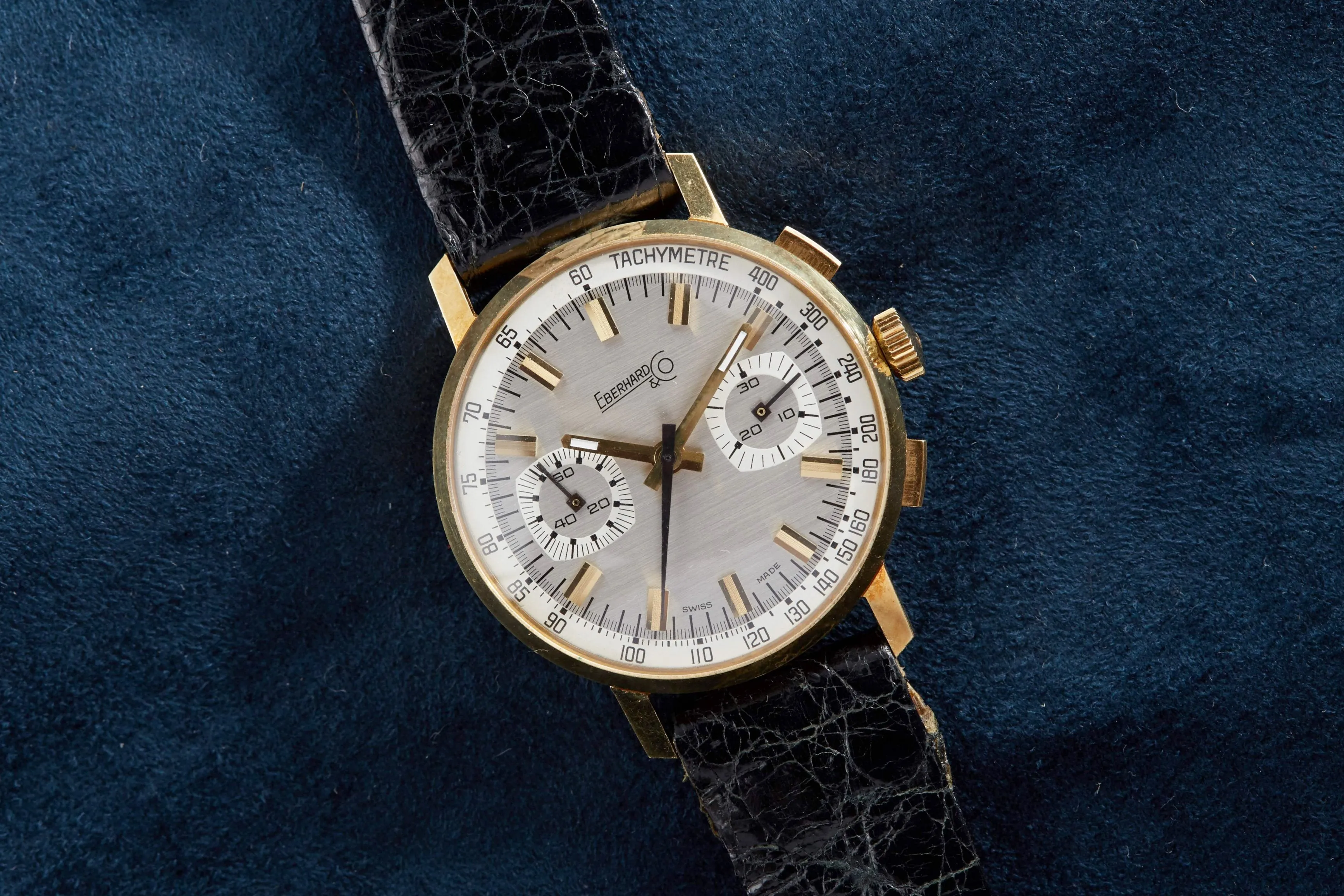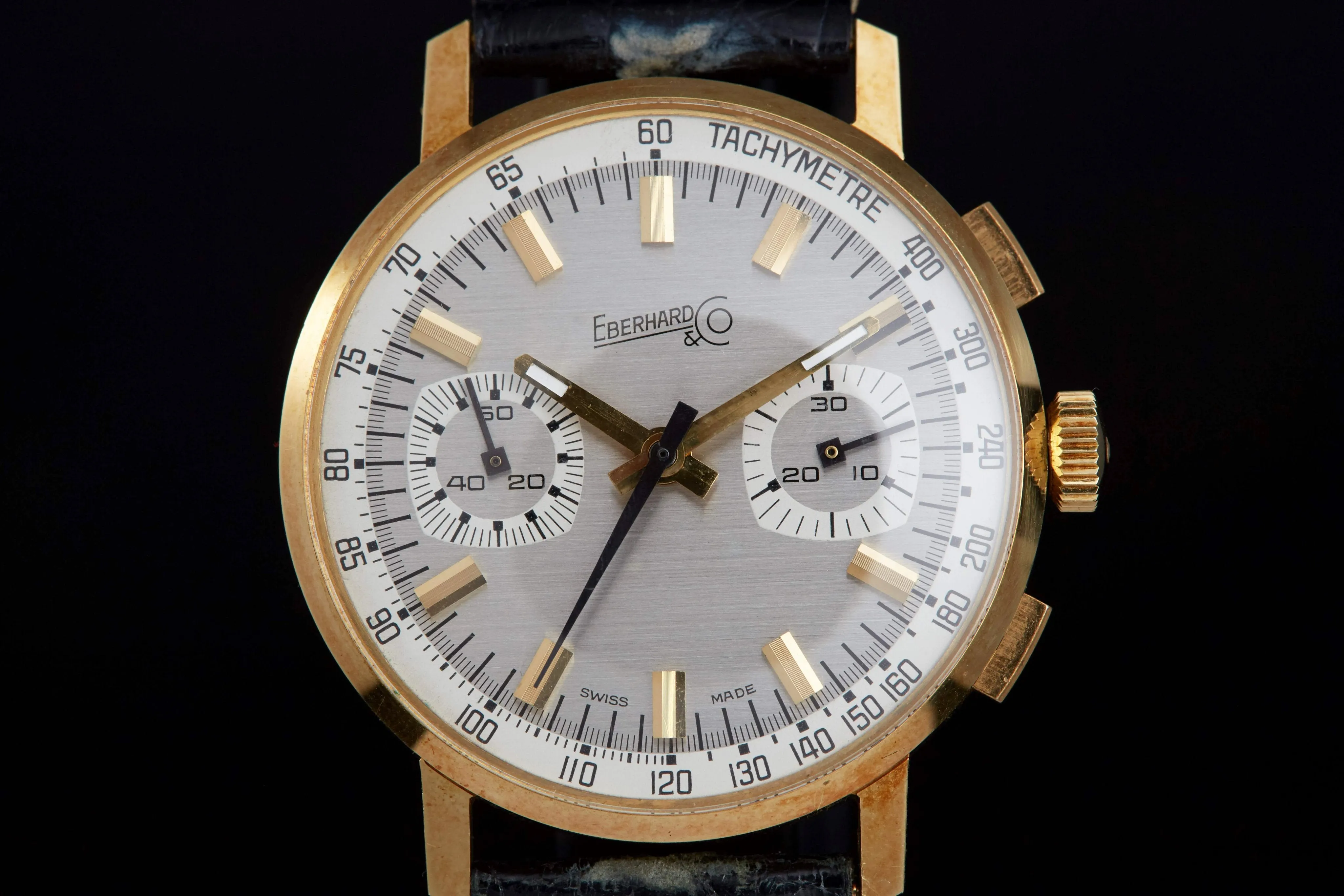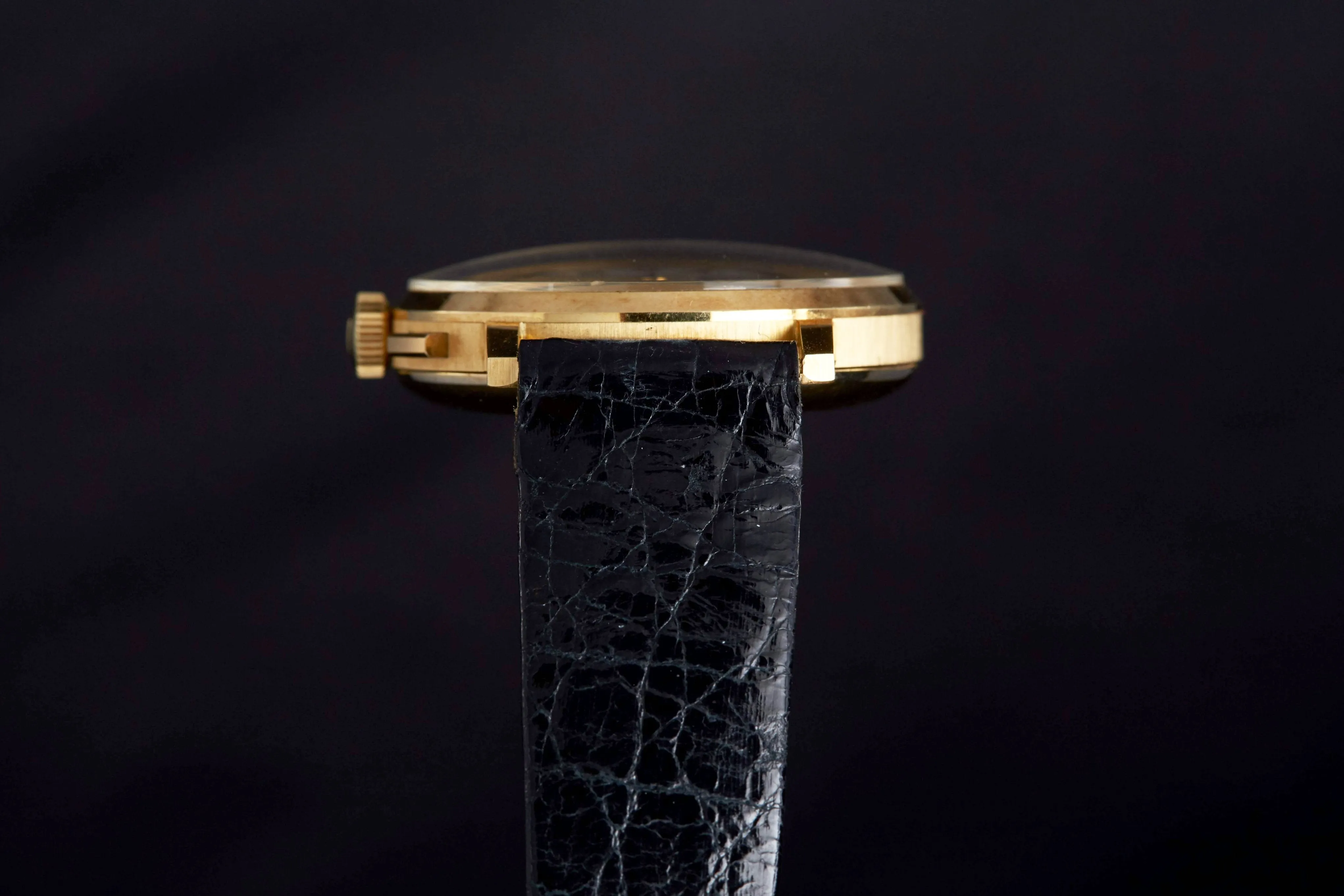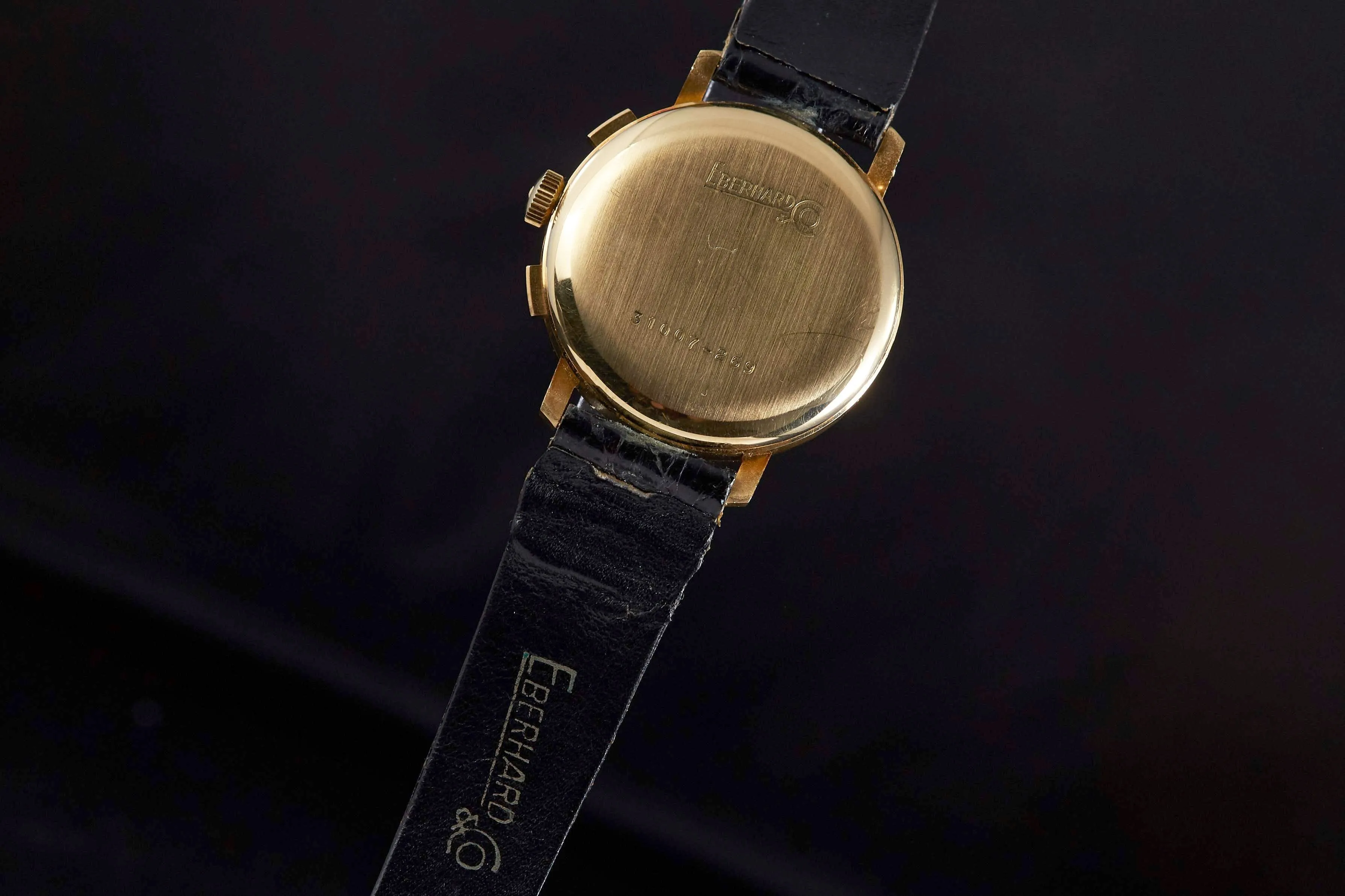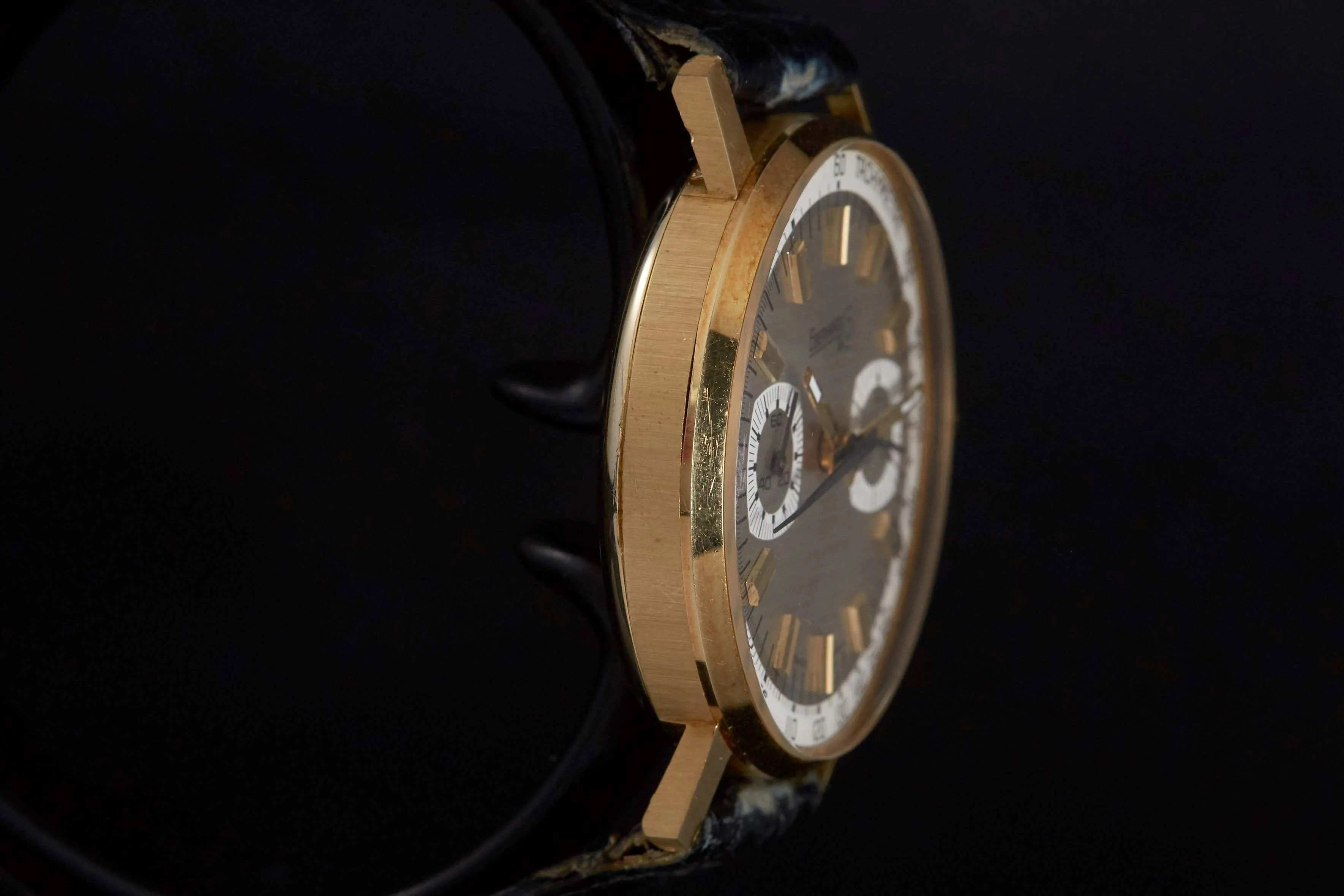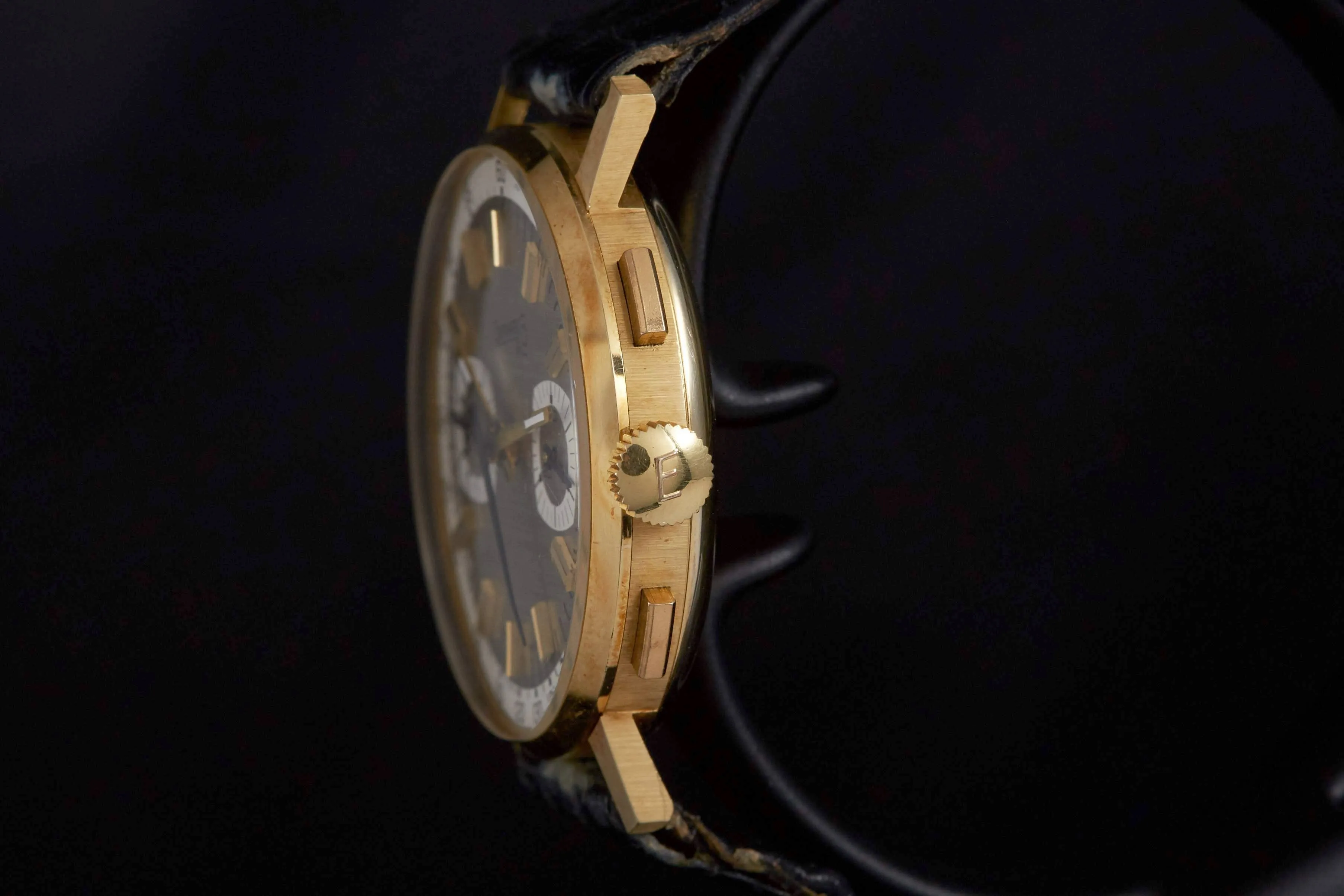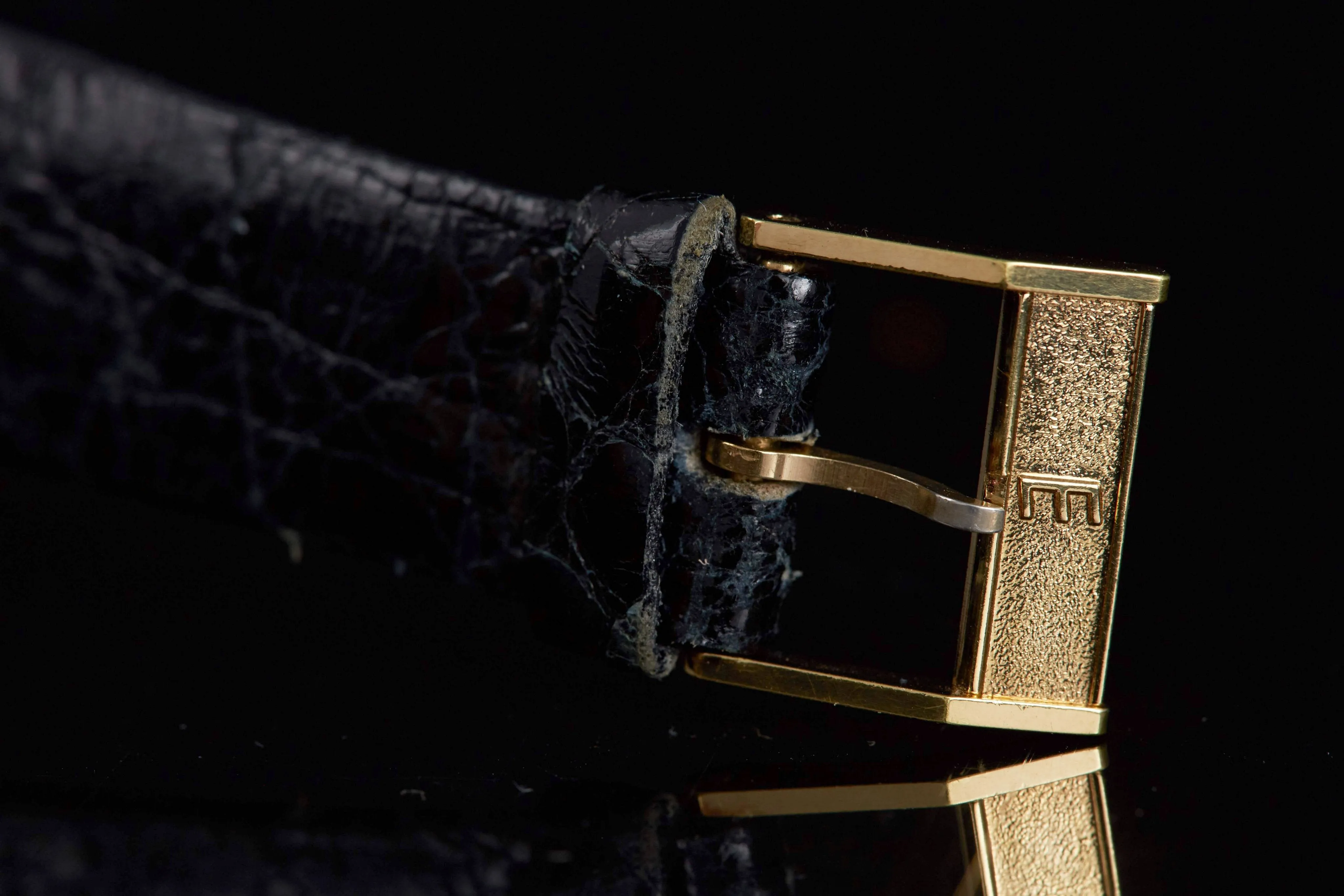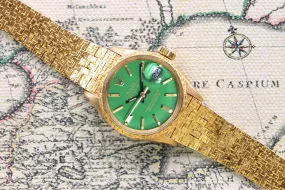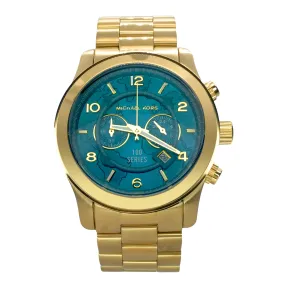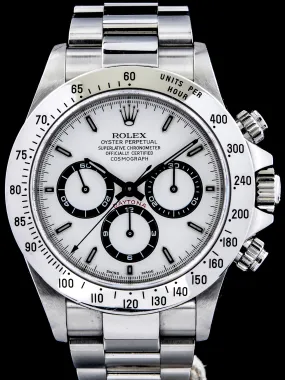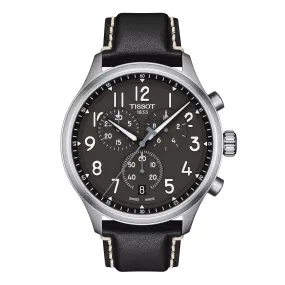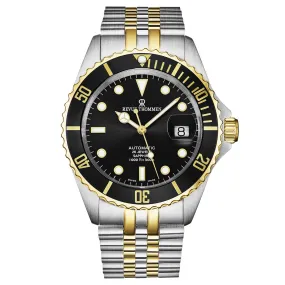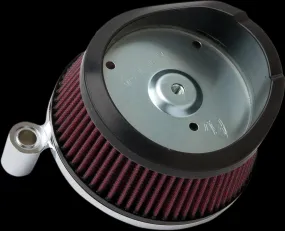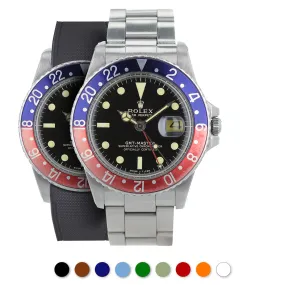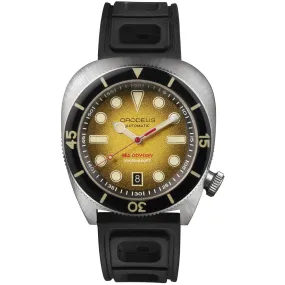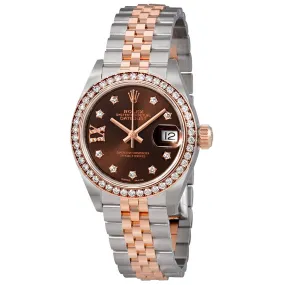Why We Love It
We've had a handful of Eberhard chronographs before, and it's safe to say that each one carries with it a distinct look and presence on the wrist. From the coveted Scafograf to the elusive 'snail' chronographs, Eberhard chronos seem to have personalities of their own.
It's the personality of this 36mm chronograph that grabbed us; the solid 18K gold case is sleek and proportional with its straight lugs playing nicely off the squared pushers. The two tone dial takes on various shades and hues in different lights owing to the sharp contrast between the brushed silver dial and matte white accents, and with its Singer-style design, it's evocative of the sport chronographs we dream about.
All in all, this gorgeous watch punches well above its weight class making us wish we had two, just so we could wear one on each wrist.
The Story
Founded in La Chaux-de-Fonds by Georges Eberhard in 1887, by 1907 the manufacture had grown to be one of the largest in Switzerland. Literally: its headquarters on the Rue Leopold Robert spanned an entire block.
Some of the company’s earliest triumphs were in the realm of chronographs, including the debut of a double-pusher chronograph in 1935 and a chronograph with a rattrapante function in 1939.
The eruption of World War II saw watches made by Eberhard, like many other manufactures, on the wrist of the world's militaries--a chronograph with a flyback complication was worn by officers in the Italian Navy.
After the war, along with much of the Swiss watch industry, the manufacture broadened its production to encompass watches meant for sports that emerged in the post-war period. But the brand’s best-known product is without a doubt the Scafograf dive watch, a perennial favorite of collectors.
However, theirs was an expansive output, encompassing everything from delicate time-only ladies’ watches to other, more complicated creations





